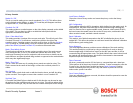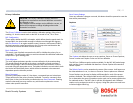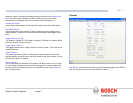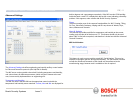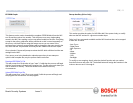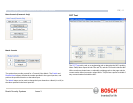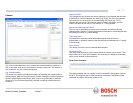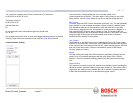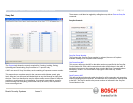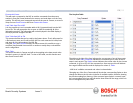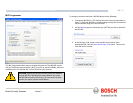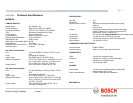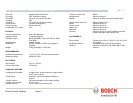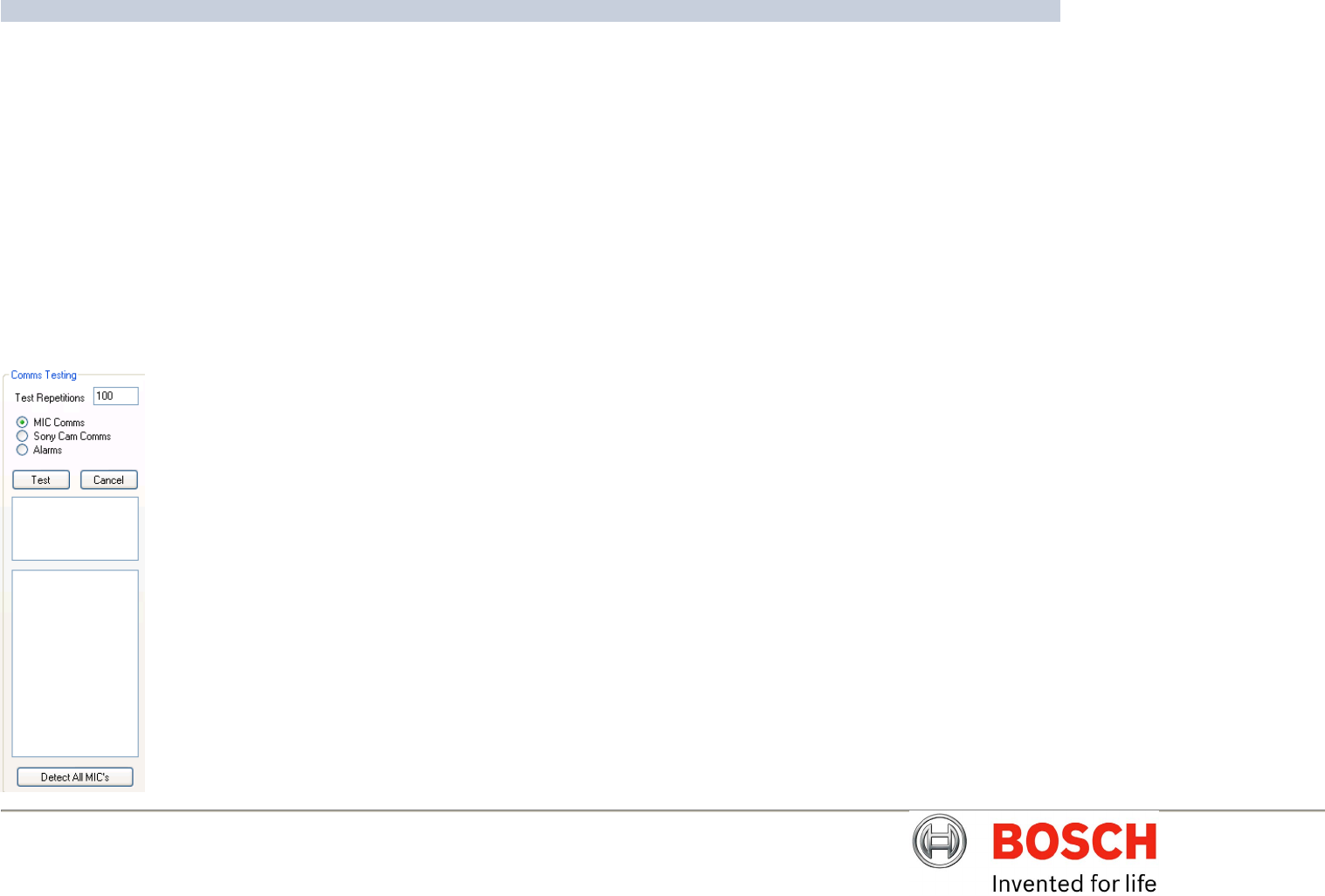
MIC400 Series Camera | Installation and Operation Manual AAAEN | 49
Bosch Security Systems Issue 1
For example a complete Learn Preset 1 command in FV protocol is:
0A 30 31 30 41 36 4D 30 31 80
The header on this is:
0A 30 31 30 41 36
and the checksum:
80
So to transmit the same command the input box should read:
4D, 30, 31
Any variation on this will cause an error to be flagged indicating why the command
is wrong. Once written the command is sent using the Send Now command.
Communications Testing
Communications Testing enables the user to test the quality of the
communications link to the MIC. This does require 2 way comms for any of the
below options. Use the Cancel button at any time to stop the testing process.
MIC Comms
To initiate, select the MIC Comms radio button and press Test. This will repeatedly
query the MIC for a set response the number of times of which is defined by the
Test Repetitions input box. If the response is valid and within the correct time
frame then it is logged as a pass. No response or a late response is flagged as a
time out and short or incorrect data is classed as a fail. The results of this are
continually displayed in the small window directly below the Test button. Any faults
along the length of the comms lines will normally result in fails or timeouts
dependant on the severity of the problem.
Cam Comms
Starting this is as with MIC Comms but by selecting the Sony Cam Comms radio
instead. So long as the MIC Comms are 100% reliable this will return the reliability
of the comms to the Sony Module inside the MIC, again returning passes, fails and
time outs in the same frame. If these are intermittent, please contact Bosch
Security Systems for advice.
Alarms
This test monitors the state of the 8 alarm inputs if applicable, printing if they are
turned On or Off continually throughout the test in the larger of the 2 results
windows. The test is started by selecting Alarms from the options and pressing
Test.
Detect All MICs
This sends out a request to each MIC address for its Software Version printing the
Response and the respective address in the large results box. This can be used in
conjunction with setting a site of multiple MICs all to address 0 (random address)
to then find what address each is on and therefore regain control.



